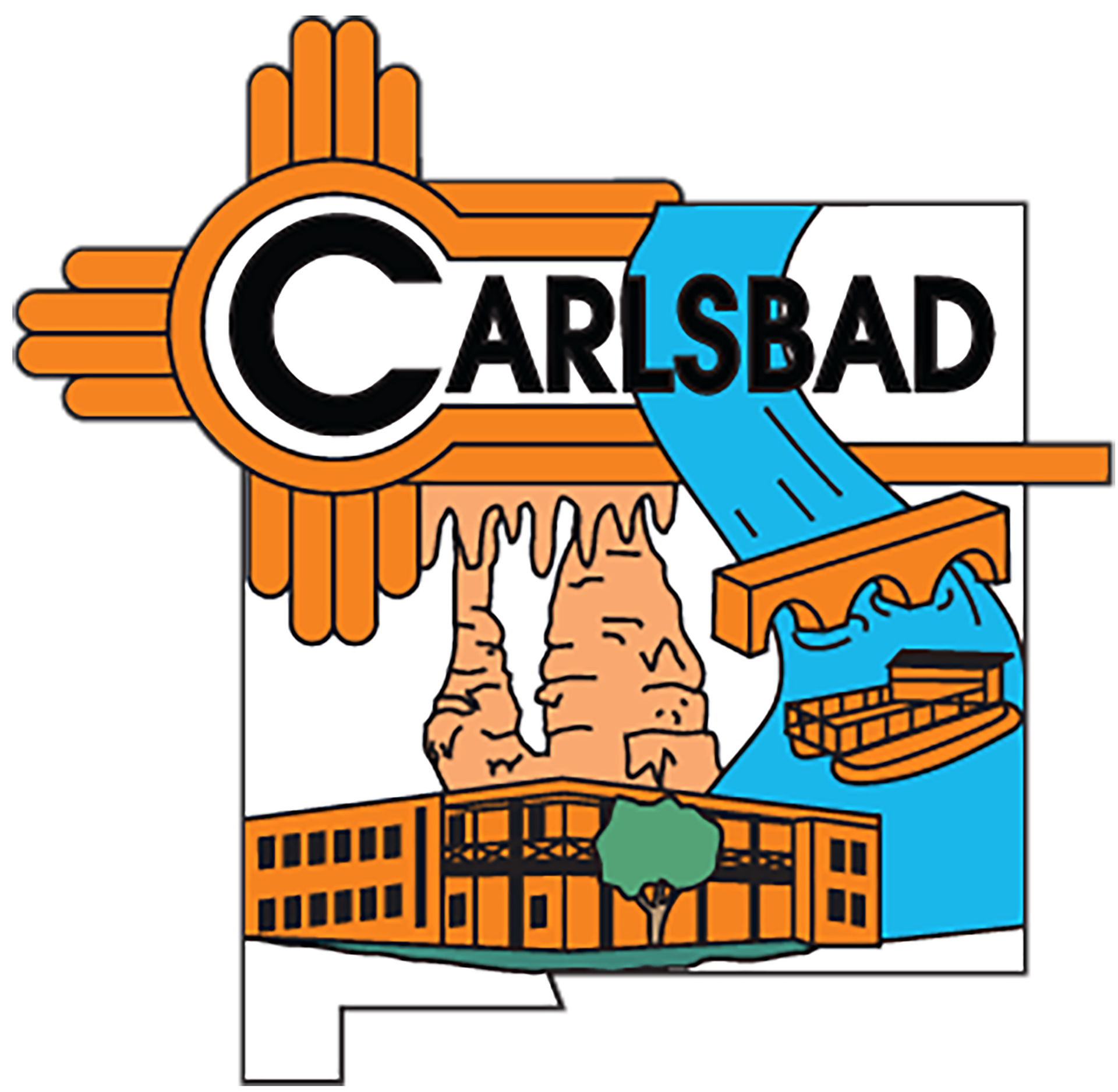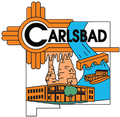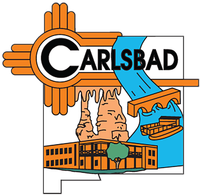Call Us! (575) 887-1191 | (800) 658-2713
News & Announcements

July 1, 2024
New Mexico State Parks Rangers, New Mexico Sheriffs, and New Mexico State Police Officers have full authority to enforce New Mexico’s boating laws and regulations. Some waters have additional equipment and operational restrictions. Additionally through City of Carlsbad Ordinance Article III. Boating Regulations on Carlsbad City Lake, Carlsbad Police Officers have the authority to enforce local ordinances. Before boating on a particular water, check with the local authorities for additional regulations. Know the Law To ensure safety on the water for you and others, it is important that boaters be familiar with the Boat Act , the Boating While Intoxicated Act , and regulations for boating operation and safety . Take the time to learn the laws and regulations for vessel length, capacity, required safety equipment , anchoring and mooring, prohibited operation, and traffic control. Alcohol and Drugs New Mexico law prohibits anyone from operating under the influence of alcohol or any drug or other controlled substance. It is illegal to operate with a blood alcohol content (BAC) of 0.08 or higher. Navigating on New Mexico Waters Safe navigation is the responsibility of all boaters. When a person operating a vessel meets, overtakes, or crosses another vessel’s course, the operator shall take the appropriate action. · Meeting head-on : both vessels shall turn to starboard (right). · Overtaking : the vessel that is overtaking another vessel should keep clear of the vessel being overtaken. · Crossing paths : the vessel approaching from the left shall give way by altering course, slowing down, stopping, or reversing. · Power operated vessels : a power operated vessel shall give way to a non-powered vessel. · Vessel departure/arrival : a vessel approaching a pier or dock shall give way to a vessel leaving a dock. · Distance : vessels shall keep 150 feet away from swimmers, water skiers, fishermen, diver flags, and others not participating in the same activity. Tubing, Waterskiing and Wakeboarding Every person who is towed behind a vessel on a tube, water skis, a wakeboard, or a similar object must wear a U.S. Coast Guard-approved personal floatation device approved for the activity. New Mexico law states that the following dangerous practices are illegal: · Towing a person between one hour after sunset and one hour before sunrise. · Towing a person within 150 feet of public docks, mooring lines, launch ramps, boats, anglers, swimmers, or any person not also doing the same activity. · Towing a person so that he or she becomes airborne (except on a parasail). · Towing a person in a manner that would cause the person or object being towed to collide with any object or person. In addition to carrying all required safety equipment, a motorboat operator who tows anyone behind his or her vessel must also have on board: 1. A skier-down flag that is displayed in all directions when the person is in the water. 2. One of the following · a wide-angle rear-view mirror that gives the motorboat operator an unobstructed view of the person or object being towed · an observer in addition to the operator In addition to carrying all required safety equipment, a personal watercraft operator who tows anyone behind his or her vessel must also have on board: 1. A skier-down flag that is displayed in all directions when the person is in the water. 2. An observer on board in addition to the operator. 3. Manufacturer-approved seating for the operator, observer, and each person being towed. Swimming Restricted Per City of Carlsbad Ordinance Sec. 36-64: Swimming is not permitted more than 15 feet from the shore or near public boat docks while boats are in operation on Lake Carlsbad. This does not apply to skiers in authorized areas north of the walk bridge or to a water skier who has fallen or is preparing to ski. Anchoring and Mooring It is illegal to: Anchor a vessel within 150 feet of a marina, boat ramp or courtesy dock. Attach a vessel to a buoy (except a mooring buoy). Attach a vessel to a courtesy dock for longer than 10 minutes. Allow an anchored or moored vessel to drift or damage property. Prevent Pollution Discharging or depositing liquid or solid waste into state waters is illegal. This includes oil and gray water. Polluters may be held civilly liable for cleanup costs and may be fined thousands of dollars. Visit the New Mexico Environment Department Surface Water Quality Bureau to learn more and to Report a Spill . Prohibited Operations New Mexico law states that the following dangerous operating practices are illegal: · Reckless or negligent operation. · Overloading a vessel. · Bow riding. · Teak surfing (“platform dragging”). · Sitting on a seat back while the vessel is underway. · Allowing your legs to hang overboard at any time. · Allowing a child younger than 13 to operate a vessel without onboard adult supervision. New Engine Cut-Off Switch Law Engine Cut-Off Switches (ECOS) were developed to help avoid propeller injuries and to prevent runaway motorboats. Beginning April 25, 2023, a motorboat operator must use the engine cut-off switch link while the motorboat is on plane or above no-wake speed. Exceptions are: · When fishing, docking or trailering. · The engine is three horsepower or less. · An engine cut-off switch was not installed by the manufacturer. · The vessel is 26 feet or longer. · The main helm is in an enclosed cabin. Safety Equipment Personal Watercraft (PWC) “Personal watercraft” (PWC) means a class A motorboat less than 16 feet, designed to be operated by a person sitting, standing or kneeling on the vessel rather than the operator sitting or standing inside the vessel. Examples include Jet Ski, Sea-Doo, WaveRunner and similar devices. Boats have no brakes, and neither do PWCs. On some models, there is a moveable "gate" that can be dropped over the nozzle to provide reverse thrust. Be careful, though, this was not designed to stop a PWC and jumping into reverse at high speeds may cause the bow to dive throwing the operator over the handlebars! However, some newer models feature a modified reverse bucket that has proven to be effective for slowing the craft significantly. Still, the PWC glides with momentum and definitely does not stop on a dime - do not be fooled into thinking these are actual "brakes." PWCs are built for quick, sharp turns, tight-radius circling, and rapid acceleration. However, they are only truly maneuverable with the throttle engaged – TO MAINTAIN STEERAGE, YOU MUST APPLY THROTTLE! The best way to avoid hitting an object is NOT to slow down, rather, you should apply throttle and steer away to avoid impact. Legally Required Equipment: · Certificate of Number (registration card) on board and available for inspection. 18.17.2 NMAC · Boater Education Card on board. 18.17.4 NMAC · Registration Numbers on each side of the motorboat’s forward half. 18.17.2 NMAC · Wearable Personal Flotation Device (PFD) for each person on board, in serviceable condition, and approved by the U.S. Coast Guard. (All persons on a PWC must wear a life jacket.) 18.17.2 NMAC · Fire Extinguisher (Type 5-B) approved by the U.S. Coast Guard, if the vessel has an inboard engine, closed compartments under thwarts and seats where portable fuel tanks may be stored, double bottoms not sealed to the hull or that are not completely filled with flotation material, closed living spaces, closed storage compartments in which combustible or flammable materials may be stored, or permanently installed fuel tanks. 18.17.2 NMAC · Rope of at least equal length to the vessel. Section 66-12-7 NMSA 1978 · Paddle or Oar. Section 66-12-7 NMSA 1978 · Bailing Bucket with a capacity of at least one gallon or hand-operated Bilge Pump. Section 66-12-7 NMSA 1978 · Sound Producing Device capable of producing a two-second blast that is audible for at least one-half mile, such as a horn or whistle. 18.17.2 NMAC · Ventilation System if carrying or using any flammable or toxic fluid in any enclosure for any purpose. Section 66-12-7 NMSA 1978 · Backfire Flame Arrestor if vessel has an inboard motor. 18.17.2 NMAC · Engine Cut-Off Switch Link, attached to the operator, operator’s clothing, or operator’s PFD, if equipped. 18.17.2 NMAC Motorboat or Sailboat Less Than 16 Feet (Class A and Class 1) “Motorboat” means any vessel propelled by machinery, whether or not machinery is the principal source of propulsion, but does not include a vessel that has a valid marine document issued by the bureau of customs of the United States government or any federal agency successor thereto. “Sailboat” means any vessel propelled or designed to be propelled by sail and that does not have a valid document issued by a federal agency, but does not include a sailboard or windsurf board. Legally Required Equipment: · Certificate of Number (registration card) on board and available for inspection. 18.17.2 NMAC · Boater Education Card on board. 18.17.4 NMAC · Registration Numbers on each side of the motorboat’s forward half. 18.17.2 NMAC · Wearable Personal Flotation Device (PFD) for each person on board, in serviceable condition, readily accessible, and approved by the U.S. Coast Guard. 18.17.2 NMAC · Throwable Personal Flotation Device, in serviceable condition, readily accessible, and approved by the U.S. Coast Guard. 18.17.2 NMAC · Fire Extinguisher (Type 5-B) approved by the U.S. Coast Guard, if the vessel has an inboard engine, closed compartments under thwarts and seats where portable fuel tanks may be stored, double bottoms not sealed to the hull or that are not completely filled with flotation material, closed living spaces, closed storage compartments in which combustible or flammable materials may be stored, or permanently installed fuel tanks. 18.17.2 NMAC · Rope of at least equal length to the vessel. Section 66-12-7 NMSA 1978 · Paddle or Oar. Section 66-12-7 NMSA 1978 · Bailing Bucket with a capacity of at least one gallon, or hand-operated Bilge Pump. Section 66-12-7 NMSA 1978 · Sound Producing Device capable of producing a two-second blast that is audible for at least one-half mile, such as a horn or whistle. 18.17.2 NMAC · Ventilation System, if carrying or using any flammable or toxic fluid in any enclosure for any purpose. Section 66-12-7 NMSA 1978 · Backfire Flame Arrestor if vessel has an inboard motor. 18.17.2 NMAC · Engine Cut-Off Switch Link, attached to the operator, operator’s clothing, or operator’s PFD, if equipped. 18.17.2 NMAC Canoe, Kayak, Stand-up Paddleboard or Rubber Raft For your canoe, kayak, stand-up paddleboard or rubber raft here is the list of legally required equipment and additional boating safety information. Legally Required Equipment: · Wearable Personal Flotation Device (PFD) for each person on board, in serviceable condition, and approved by the U.S. Coast Guard. (All persons on a canoe, kayak, stand-up paddleboard or rubber raft must wear a life jacket.) 18.17.2 NMAC · Paddle or Oar. Section 66-12-7 NMSA 1978 · Sound Producing Device capable of producing a two-second blast that is audible for at least one-half mile, such as a horn or whistle. 18.17.2 NMAC Additional Boating Safety Information and Boating Laws: · Do not exceed the capacity of the boat. (Count the people being towed as well as the people in the boat.) · Properly working lights are required to be displayed between one half-hour after sunset to one-half hour before sunrise. Section 66-12-7 NMSA 1978 and 18.17.2 NMAC. · Children under the age of 13 may not operate a motorboat except when under an adult’s onboard supervision. 18.17.2 NMAC · Life jackets must be worn by: o children under the age of 13 while underway except when below deck or in an enclosed cabin, o every person towed behind a vessel, and o persons boating on a river. Section 66-12-14 NMSA 1978 and 18.17.2 NMAC · Towing can be legally done only if: o the vessel is equipped with a device capable of letting the operator have an unobstructed view of the person or object being towed, or o an observer is on board in addition to the operator. Section 66-12-14 NMSA 1978 · A red or orange flag (commonly referred to as skier down flag) is required to be displayed when a person or people being towed are in the water. The flag must be at least one foot square. 18.17.2 NMAC Life jackets must be approved by the U.S. Coast Guard, be in good condition, be properly sized for each person, and be readily accessible. All motorboat operators born on or after January 1, 1989, ("motorboat" includes sailboats, powerboats, personal watercraft and any vessel powered by an electric motor) must have completed a boating safety course approved by NASBLA and the state agency. Any operator may also operate a motorboat if they have passed an approved, proctored equivalency test; or possess a valid license from the US Coast Guard or Canadian Government. Proof of boater education is required to be carried abroad during operation. For renter, the instruction given on safe boating operation by the rental company complies as a temporary certificate for 30 days. New Mexico State Parks recommends that all boaters take a boating safety course. Operating Rules 1. Speed Limits: Operators must follow posted speed limits and operate at a safe speed at all times. Per City of Carlsbad Ordinance Sec. 36-63- Speed Restriction: All motor boats shall be operated at a speed no greater than is reasonable and proper under conditions at the time and place of operation and, at no time, shall exceed 35 miles per hour. 2. If a PWC is equipped with an emergency engine cut off lanyard, it should be properly attached to the operator during operation. Accidents and Reporting 1. Accident Reporting: Accidents resulting in death, disappearance, injury requiring medical treatment, or property damage exceeding $100 must be reported to the New Mexico State Parks Division. Boat Rentals Rental Agents A motorboat may be rented for up to 30 days. New Mexico’s mandatory boating education law requires businesses that rent motorboats to review the dockside safety checklist with each authorized operator. The checklist includes operating instructions and a summary of laws regarding the rental motorboat’s safe operation. This includes: · sail/float plan · emergency preparedness information · pre-departure maintenance check · required equipment check · handling/loading specifications and · weather forecast Rental agents must review the contents of the checklist with each authorized operator to ensure every statement about operation and safety equipment is understood. The authorized operator must initial each item, sign, and keep the checklist onboard the rental motorboat. Boaters who do not carry the checklist aboard rented motorboats may be ticketed if stopped by a marine law enforcement officer. Please visit https://www.emnrd.nm.gov/spd/activities/boating-2/ for the Dockside Safety Checklist Rental Boat Responsibility Marine law enforcement officers may cite the operator and owner of a rental boat for violation of 18.17.2.10 NMAC , which states that if a vessel does not contain the safety equipment required, then either the rental agent or the operator, or both, may be cited. Owners of rental vessels, including non-motorized vessels, need to ensure that the boat is properly equipped with all legally required safety equipment before allowing it to enter the water. For further information please go to: https://www.emnrd.nm.gov/spd/activities/boating-2/

By Brent Griffith
•
June 18, 2024
The Solid Waste Department will be implementing a new lid lock pilot program for the roll-out cans used by the city. With the addition of a lid lock, we can help resolve the issue of trash escaping the roll-out cans due to wind gusts, and keep Carlsbad beautiful. SAFEWASTE Brochure | SAFEWASTE Installation Flyer

July 1, 2024
New Mexico State Parks Rangers, New Mexico Sheriffs, and New Mexico State Police Officers have full authority to enforce New Mexico’s boating laws and regulations. Some waters have additional equipment and operational restrictions. Additionally through City of Carlsbad Ordinance Article III. Boating Regulations on Carlsbad City Lake, Carlsbad Police Officers have the authority to enforce local ordinances. Before boating on a particular water, check with the local authorities for additional regulations. Know the Law To ensure safety on the water for you and others, it is important that boaters be familiar with the Boat Act , the Boating While Intoxicated Act , and regulations for boating operation and safety . Take the time to learn the laws and regulations for vessel length, capacity, required safety equipment , anchoring and mooring, prohibited operation, and traffic control. Alcohol and Drugs New Mexico law prohibits anyone from operating under the influence of alcohol or any drug or other controlled substance. It is illegal to operate with a blood alcohol content (BAC) of 0.08 or higher. Navigating on New Mexico Waters Safe navigation is the responsibility of all boaters. When a person operating a vessel meets, overtakes, or crosses another vessel’s course, the operator shall take the appropriate action. · Meeting head-on : both vessels shall turn to starboard (right). · Overtaking : the vessel that is overtaking another vessel should keep clear of the vessel being overtaken. · Crossing paths : the vessel approaching from the left shall give way by altering course, slowing down, stopping, or reversing. · Power operated vessels : a power operated vessel shall give way to a non-powered vessel. · Vessel departure/arrival : a vessel approaching a pier or dock shall give way to a vessel leaving a dock. · Distance : vessels shall keep 150 feet away from swimmers, water skiers, fishermen, diver flags, and others not participating in the same activity. Tubing, Waterskiing and Wakeboarding Every person who is towed behind a vessel on a tube, water skis, a wakeboard, or a similar object must wear a U.S. Coast Guard-approved personal floatation device approved for the activity. New Mexico law states that the following dangerous practices are illegal: · Towing a person between one hour after sunset and one hour before sunrise. · Towing a person within 150 feet of public docks, mooring lines, launch ramps, boats, anglers, swimmers, or any person not also doing the same activity. · Towing a person so that he or she becomes airborne (except on a parasail). · Towing a person in a manner that would cause the person or object being towed to collide with any object or person. In addition to carrying all required safety equipment, a motorboat operator who tows anyone behind his or her vessel must also have on board: 1. A skier-down flag that is displayed in all directions when the person is in the water. 2. One of the following · a wide-angle rear-view mirror that gives the motorboat operator an unobstructed view of the person or object being towed · an observer in addition to the operator In addition to carrying all required safety equipment, a personal watercraft operator who tows anyone behind his or her vessel must also have on board: 1. A skier-down flag that is displayed in all directions when the person is in the water. 2. An observer on board in addition to the operator. 3. Manufacturer-approved seating for the operator, observer, and each person being towed. Swimming Restricted Per City of Carlsbad Ordinance Sec. 36-64: Swimming is not permitted more than 15 feet from the shore or near public boat docks while boats are in operation on Lake Carlsbad. This does not apply to skiers in authorized areas north of the walk bridge or to a water skier who has fallen or is preparing to ski. Anchoring and Mooring It is illegal to: Anchor a vessel within 150 feet of a marina, boat ramp or courtesy dock. Attach a vessel to a buoy (except a mooring buoy). Attach a vessel to a courtesy dock for longer than 10 minutes. Allow an anchored or moored vessel to drift or damage property. Prevent Pollution Discharging or depositing liquid or solid waste into state waters is illegal. This includes oil and gray water. Polluters may be held civilly liable for cleanup costs and may be fined thousands of dollars. Visit the New Mexico Environment Department Surface Water Quality Bureau to learn more and to Report a Spill . Prohibited Operations New Mexico law states that the following dangerous operating practices are illegal: · Reckless or negligent operation. · Overloading a vessel. · Bow riding. · Teak surfing (“platform dragging”). · Sitting on a seat back while the vessel is underway. · Allowing your legs to hang overboard at any time. · Allowing a child younger than 13 to operate a vessel without onboard adult supervision. New Engine Cut-Off Switch Law Engine Cut-Off Switches (ECOS) were developed to help avoid propeller injuries and to prevent runaway motorboats. Beginning April 25, 2023, a motorboat operator must use the engine cut-off switch link while the motorboat is on plane or above no-wake speed. Exceptions are: · When fishing, docking or trailering. · The engine is three horsepower or less. · An engine cut-off switch was not installed by the manufacturer. · The vessel is 26 feet or longer. · The main helm is in an enclosed cabin. Safety Equipment Personal Watercraft (PWC) “Personal watercraft” (PWC) means a class A motorboat less than 16 feet, designed to be operated by a person sitting, standing or kneeling on the vessel rather than the operator sitting or standing inside the vessel. Examples include Jet Ski, Sea-Doo, WaveRunner and similar devices. Boats have no brakes, and neither do PWCs. On some models, there is a moveable "gate" that can be dropped over the nozzle to provide reverse thrust. Be careful, though, this was not designed to stop a PWC and jumping into reverse at high speeds may cause the bow to dive throwing the operator over the handlebars! However, some newer models feature a modified reverse bucket that has proven to be effective for slowing the craft significantly. Still, the PWC glides with momentum and definitely does not stop on a dime - do not be fooled into thinking these are actual "brakes." PWCs are built for quick, sharp turns, tight-radius circling, and rapid acceleration. However, they are only truly maneuverable with the throttle engaged – TO MAINTAIN STEERAGE, YOU MUST APPLY THROTTLE! The best way to avoid hitting an object is NOT to slow down, rather, you should apply throttle and steer away to avoid impact. Legally Required Equipment: · Certificate of Number (registration card) on board and available for inspection. 18.17.2 NMAC · Boater Education Card on board. 18.17.4 NMAC · Registration Numbers on each side of the motorboat’s forward half. 18.17.2 NMAC · Wearable Personal Flotation Device (PFD) for each person on board, in serviceable condition, and approved by the U.S. Coast Guard. (All persons on a PWC must wear a life jacket.) 18.17.2 NMAC · Fire Extinguisher (Type 5-B) approved by the U.S. Coast Guard, if the vessel has an inboard engine, closed compartments under thwarts and seats where portable fuel tanks may be stored, double bottoms not sealed to the hull or that are not completely filled with flotation material, closed living spaces, closed storage compartments in which combustible or flammable materials may be stored, or permanently installed fuel tanks. 18.17.2 NMAC · Rope of at least equal length to the vessel. Section 66-12-7 NMSA 1978 · Paddle or Oar. Section 66-12-7 NMSA 1978 · Bailing Bucket with a capacity of at least one gallon or hand-operated Bilge Pump. Section 66-12-7 NMSA 1978 · Sound Producing Device capable of producing a two-second blast that is audible for at least one-half mile, such as a horn or whistle. 18.17.2 NMAC · Ventilation System if carrying or using any flammable or toxic fluid in any enclosure for any purpose. Section 66-12-7 NMSA 1978 · Backfire Flame Arrestor if vessel has an inboard motor. 18.17.2 NMAC · Engine Cut-Off Switch Link, attached to the operator, operator’s clothing, or operator’s PFD, if equipped. 18.17.2 NMAC Motorboat or Sailboat Less Than 16 Feet (Class A and Class 1) “Motorboat” means any vessel propelled by machinery, whether or not machinery is the principal source of propulsion, but does not include a vessel that has a valid marine document issued by the bureau of customs of the United States government or any federal agency successor thereto. “Sailboat” means any vessel propelled or designed to be propelled by sail and that does not have a valid document issued by a federal agency, but does not include a sailboard or windsurf board. Legally Required Equipment: · Certificate of Number (registration card) on board and available for inspection. 18.17.2 NMAC · Boater Education Card on board. 18.17.4 NMAC · Registration Numbers on each side of the motorboat’s forward half. 18.17.2 NMAC · Wearable Personal Flotation Device (PFD) for each person on board, in serviceable condition, readily accessible, and approved by the U.S. Coast Guard. 18.17.2 NMAC · Throwable Personal Flotation Device, in serviceable condition, readily accessible, and approved by the U.S. Coast Guard. 18.17.2 NMAC · Fire Extinguisher (Type 5-B) approved by the U.S. Coast Guard, if the vessel has an inboard engine, closed compartments under thwarts and seats where portable fuel tanks may be stored, double bottoms not sealed to the hull or that are not completely filled with flotation material, closed living spaces, closed storage compartments in which combustible or flammable materials may be stored, or permanently installed fuel tanks. 18.17.2 NMAC · Rope of at least equal length to the vessel. Section 66-12-7 NMSA 1978 · Paddle or Oar. Section 66-12-7 NMSA 1978 · Bailing Bucket with a capacity of at least one gallon, or hand-operated Bilge Pump. Section 66-12-7 NMSA 1978 · Sound Producing Device capable of producing a two-second blast that is audible for at least one-half mile, such as a horn or whistle. 18.17.2 NMAC · Ventilation System, if carrying or using any flammable or toxic fluid in any enclosure for any purpose. Section 66-12-7 NMSA 1978 · Backfire Flame Arrestor if vessel has an inboard motor. 18.17.2 NMAC · Engine Cut-Off Switch Link, attached to the operator, operator’s clothing, or operator’s PFD, if equipped. 18.17.2 NMAC Canoe, Kayak, Stand-up Paddleboard or Rubber Raft For your canoe, kayak, stand-up paddleboard or rubber raft here is the list of legally required equipment and additional boating safety information. Legally Required Equipment: · Wearable Personal Flotation Device (PFD) for each person on board, in serviceable condition, and approved by the U.S. Coast Guard. (All persons on a canoe, kayak, stand-up paddleboard or rubber raft must wear a life jacket.) 18.17.2 NMAC · Paddle or Oar. Section 66-12-7 NMSA 1978 · Sound Producing Device capable of producing a two-second blast that is audible for at least one-half mile, such as a horn or whistle. 18.17.2 NMAC Additional Boating Safety Information and Boating Laws: · Do not exceed the capacity of the boat. (Count the people being towed as well as the people in the boat.) · Properly working lights are required to be displayed between one half-hour after sunset to one-half hour before sunrise. Section 66-12-7 NMSA 1978 and 18.17.2 NMAC. · Children under the age of 13 may not operate a motorboat except when under an adult’s onboard supervision. 18.17.2 NMAC · Life jackets must be worn by: o children under the age of 13 while underway except when below deck or in an enclosed cabin, o every person towed behind a vessel, and o persons boating on a river. Section 66-12-14 NMSA 1978 and 18.17.2 NMAC · Towing can be legally done only if: o the vessel is equipped with a device capable of letting the operator have an unobstructed view of the person or object being towed, or o an observer is on board in addition to the operator. Section 66-12-14 NMSA 1978 · A red or orange flag (commonly referred to as skier down flag) is required to be displayed when a person or people being towed are in the water. The flag must be at least one foot square. 18.17.2 NMAC Life jackets must be approved by the U.S. Coast Guard, be in good condition, be properly sized for each person, and be readily accessible. All motorboat operators born on or after January 1, 1989, ("motorboat" includes sailboats, powerboats, personal watercraft and any vessel powered by an electric motor) must have completed a boating safety course approved by NASBLA and the state agency. Any operator may also operate a motorboat if they have passed an approved, proctored equivalency test; or possess a valid license from the US Coast Guard or Canadian Government. Proof of boater education is required to be carried abroad during operation. For renter, the instruction given on safe boating operation by the rental company complies as a temporary certificate for 30 days. New Mexico State Parks recommends that all boaters take a boating safety course. Operating Rules 1. Speed Limits: Operators must follow posted speed limits and operate at a safe speed at all times. Per City of Carlsbad Ordinance Sec. 36-63- Speed Restriction: All motor boats shall be operated at a speed no greater than is reasonable and proper under conditions at the time and place of operation and, at no time, shall exceed 35 miles per hour. 2. If a PWC is equipped with an emergency engine cut off lanyard, it should be properly attached to the operator during operation. Accidents and Reporting 1. Accident Reporting: Accidents resulting in death, disappearance, injury requiring medical treatment, or property damage exceeding $100 must be reported to the New Mexico State Parks Division. Boat Rentals Rental Agents A motorboat may be rented for up to 30 days. New Mexico’s mandatory boating education law requires businesses that rent motorboats to review the dockside safety checklist with each authorized operator. The checklist includes operating instructions and a summary of laws regarding the rental motorboat’s safe operation. This includes: · sail/float plan · emergency preparedness information · pre-departure maintenance check · required equipment check · handling/loading specifications and · weather forecast Rental agents must review the contents of the checklist with each authorized operator to ensure every statement about operation and safety equipment is understood. The authorized operator must initial each item, sign, and keep the checklist onboard the rental motorboat. Boaters who do not carry the checklist aboard rented motorboats may be ticketed if stopped by a marine law enforcement officer. Please visit https://www.emnrd.nm.gov/spd/activities/boating-2/ for the Dockside Safety Checklist Rental Boat Responsibility Marine law enforcement officers may cite the operator and owner of a rental boat for violation of 18.17.2.10 NMAC , which states that if a vessel does not contain the safety equipment required, then either the rental agent or the operator, or both, may be cited. Owners of rental vessels, including non-motorized vessels, need to ensure that the boat is properly equipped with all legally required safety equipment before allowing it to enter the water. For further information please go to: https://www.emnrd.nm.gov/spd/activities/boating-2/

By Brent Griffith
•
June 18, 2024
The Solid Waste Department will be implementing a new lid lock pilot program for the roll-out cans used by the city. With the addition of a lid lock, we can help resolve the issue of trash escaping the roll-out cans due to wind gusts, and keep Carlsbad beautiful. SAFEWASTE Brochure | SAFEWASTE Installation Flyer
Carlsbad City Council
Agenda Packet
The latest packet for the Carlsbad City Council will be posted here.
Council Minutes Archive
If you are looking for minutes from a previous meeting of the Carlsbad City Council, click here.
Upcoming
City Events
Our Recent Videos
Carlsbad, New Mexico:
A Place to Live, Work, and Play!
Carlsbad Caverns National Park in New Mexico
Drone Carlsbad | New Mexico | Lower Tansill Lake











